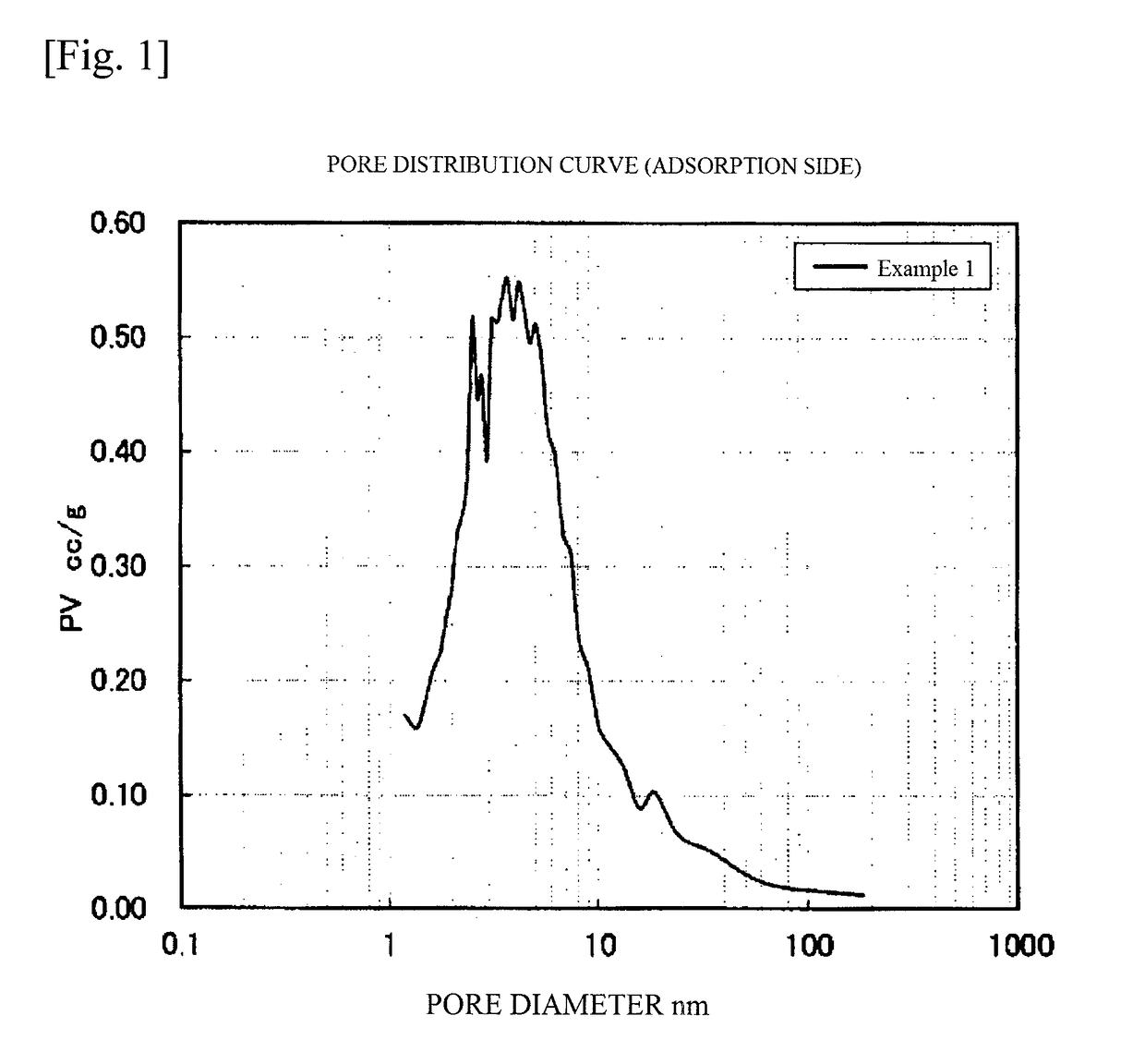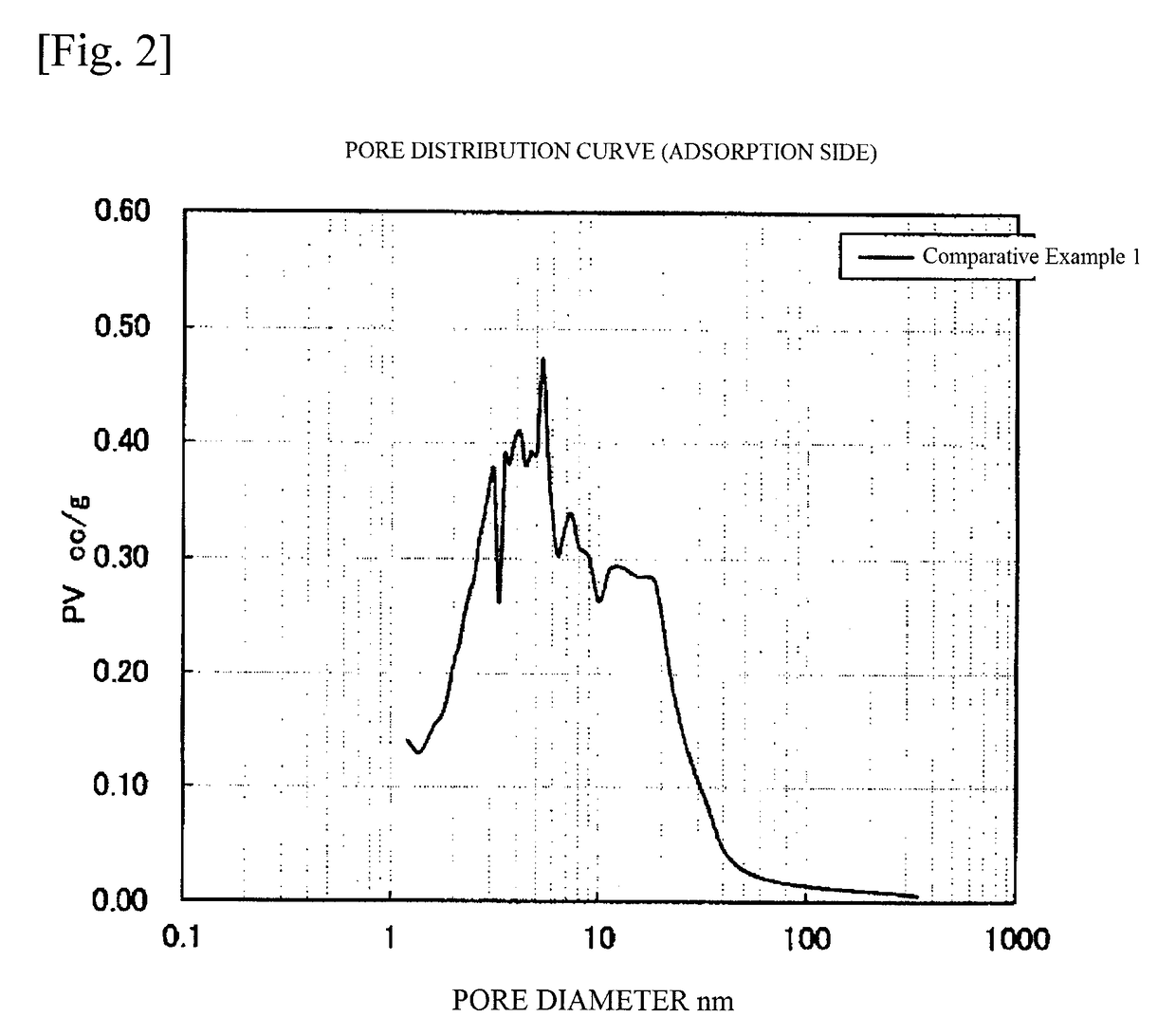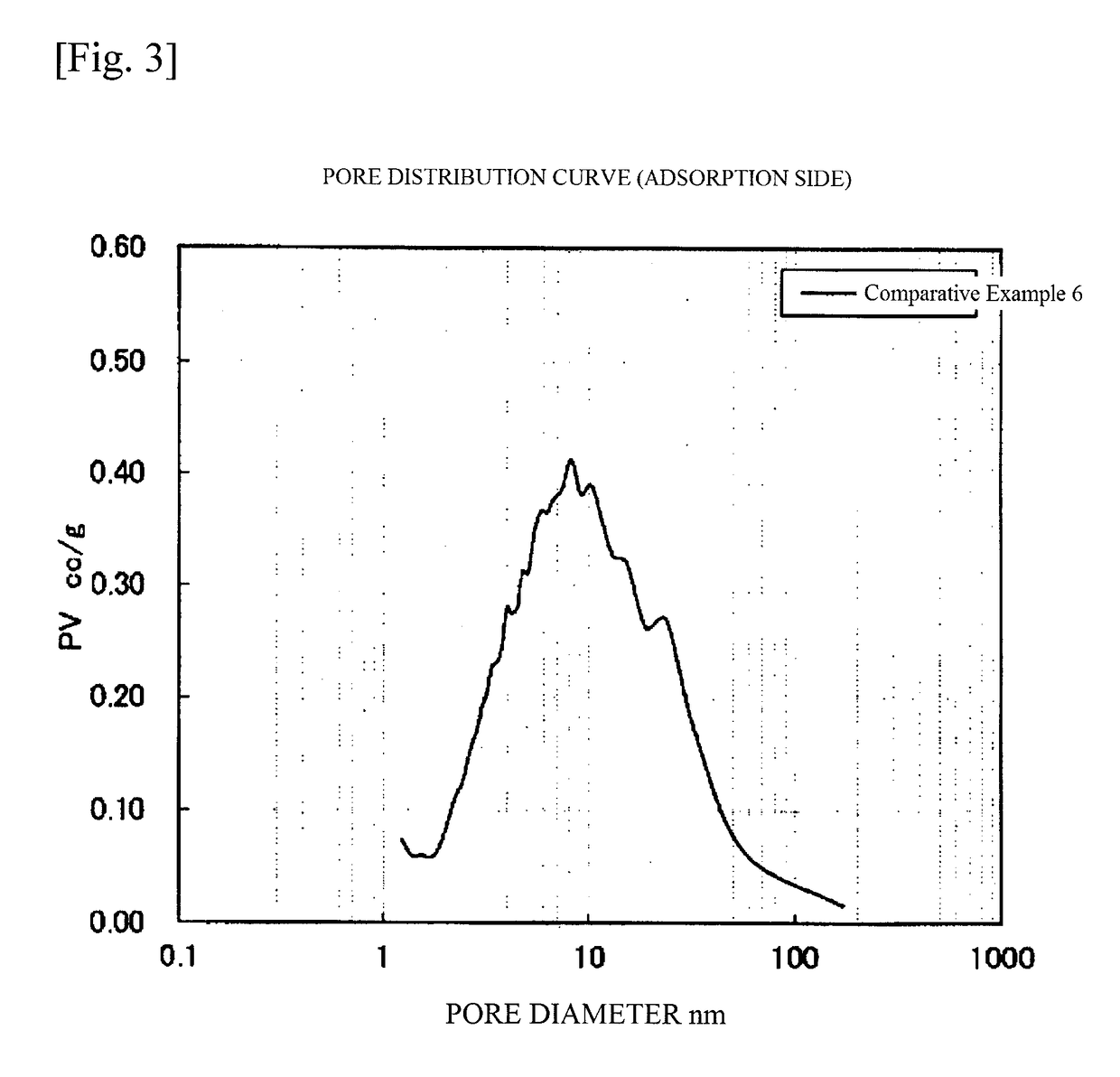Catalyst component for olefin polymerization, catalyst for olefin polymerization, and process for producing olefin (co)polymer using the same
a technology of catalyst and olefin, which is applied in the field of the catalyst for olefin polymerization, can solve the problems of insufficient activity of the catalyst components for olefin polymerization according to the proposed techniques, and achieve the effect of increasing the number of active sites and high activity
- Summary
- Abstract
- Description
- Claims
- Application Information
AI Technical Summary
Benefits of technology
Problems solved by technology
Method used
Image
Examples
example 1
1. Granulated Montmorillonite
[0320]As an ion-exchanged phyllosilicate, use was made of “Benclay KK”, manufactured by Mizusawa Industrial Chemicals, Ltd., which was a granulated montmorillonite product (main component: smectite-group montmorillonite of 2:1 type layered structure).
[0321]This granulated montmorillonite had an average particle diameter of 12.9 μm and had a chemical composition (wt %) including Al=9.81, Si=31.52, Fe=1.89, Mg=3.17, Na=2.9, K=0.25, and Ca=0.43. Molar ratios were Al / Si=0.324, Mg / Si=0.116, Fe / Si=0.03, and Mg / Al=0.359. The specific surface area thereof was 81 m2 / g. The main metal cations which constituted the octahedral sheets were aluminum. Furthermore, the Si(s) / Si(t) of this ion-exchange phyllosilicate was 0.93.
[0322]The montmorillonite which had not been granulated was used to prepare a 0.5 wt % aqueous slurry thereof, and this slurry-state montmorillonite had a particle diameter of 0.44 μm. The method used for preparing the aqueous slurry and the method ...
example 2
1. Polymerization of Propylene
[0338]Using 15 mg of the same catalyst which had undergone preliminary polymerization as in Example 1, the same polymerization operation as in Example 1 was conducted, except that ethylene was not used.
[0339]As a result, the catalytic activity was 9,000 g-PP / g-catalyst / hr. The MFR was 0.50 g / 10 min. The results obtained are shown in Table 1.
example 3
1. Chemical Treatment of Ion-Exchanged Phyllosilicate
[0340]The granulated montmorillonite of Example 1 was subjected to the same treatment with sulfuric acid as in Example 1, except that the reaction with the sulfuric acid was conducted for 420 minutes.
[0341]The chemically treated montmorillonite thus obtained had a composition (wt %) including Al=6.82, Si=37.40, Mg=1.87, and Fe=0.98, and the contents of Na, K, and Ca therein were detection limits or less. The treated montmorillonite had molar ratios of Al / Si=0.190 and Mg / Al=0.304. Through the treatment with sulfuric acid, 41.4% of the Al was eluted. The treated montmorillonite had a specific surface area of 430 m2 / g, a PV2-10 nm of 0.33 cc / g, and a PV of 0.46 cc / g. The PV2-10 nm was 71.7% of the PV.
[0342]Thereafter, a treatment with lithium sulfate hydrate was conducted in the same manner as in Example 1. The specific surface area and the pore distribution remained unchanged after the treatment with lithium sulfate hydrate.
[0343]Th...
PUM
| Property | Measurement | Unit |
|---|---|---|
| diameter | aaaaa | aaaaa |
| 2θ | aaaaa | aaaaa |
| temperature | aaaaa | aaaaa |
Abstract
Description
Claims
Application Information
 Login to View More
Login to View More - R&D
- Intellectual Property
- Life Sciences
- Materials
- Tech Scout
- Unparalleled Data Quality
- Higher Quality Content
- 60% Fewer Hallucinations
Browse by: Latest US Patents, China's latest patents, Technical Efficacy Thesaurus, Application Domain, Technology Topic, Popular Technical Reports.
© 2025 PatSnap. All rights reserved.Legal|Privacy policy|Modern Slavery Act Transparency Statement|Sitemap|About US| Contact US: help@patsnap.com



